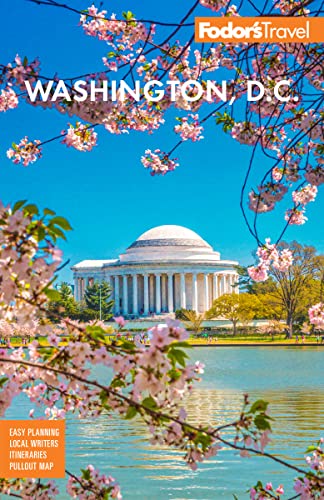Best Washington, D.C. Itineraries
One Day in D.C.
If you have a day or less in D.C., your sightseeing strategy is simple: Take the Metro to the Smithsonian stop and explore the area around the National Mall. You'll be at the heart of the city—a beautiful setting where you'll find America's greatest collection of museums, with the city's monuments and the halls of government a stone's throw away.
Facing the Capitol, to your left are the National Museum of African American History and Culture, National Museum of American History, National Museum of Natural History, and the National Gallery of Art. To your right are the Freer Gallery, the National Museum of African Art, the Hirshhorn Museum and Sculpture Garden, the National Air and Space Museum, and more. Head in the other direction, toward the Washington Monument, and you're also on your way to the National World War II Memorial, the Lincoln Memorial, the Vietnam Veterans Memorial, and more monuments to America's presidents and its past. A lover of American history and culture could spend a thoroughly happy month, much less a day, wandering the Mall and its surroundings.
If you're here first thing in the morning: You can hit monuments and memorials early. They're open 24 hours a day and staffed beginning at 9:30 am. The sculpture garden at the Hirshhorn opens at 7:30, and the Smithsonian Institution Building ("the Castle") opens at 8:30. In the Castle, you can grab a cup of coffee, watch an 18-minute film about D.C., and see examples of objects from many of the Smithsonian's 19 museums and galleries.
If you have only a few hours in the evening: Experience the beauty of the monuments at dusk and after dark. Many people think they're even more striking when the sun goes down. National Park Service rangers staff most monuments until 10 pm.
Three Days in D.C.
Day 1
With more time, you have a chance both to see the sights and to get to know the city. A guided bus tour is a good way to get oriented; a hop-on, hop-off tour will give you genuine insights without a lot of tourist hokum.
Because you can get on and off wherever you like, it's a good idea to use a bus tour to explore Georgetown and the Washington National Cathedral, neither of which is easily accessible by Metro. This is a good opportunity to visit Arlington National Cemetery as well.
In the afternoon, visit the Smithsonian American Art Museum and/or the National Portrait Gallery in Penn Quarter; the International Spy Museum, recently expanded at its new L'Enfant Plaza location, is another option.
Day 2
Devote your next day to the National Mall, where you can check out the museums and monuments that were probably your prime motivation for visiting D.C. in the first place. There's no way you can do it all in one day, so just play favorites, and save the rest for next time. Try visiting the monuments in the evening: they remain open long after the museums are closed and are dramatically lit after dark.
Keep in mind that the National Museum of Natural History is the most visited museum in the country, while the National Air and Space Museum, the National Gallery of Art, and the National Museum of American History aren't far behind; plan for crowds almost any time you visit. If you visit the United States Holocaust Memorial Museum, plan on spending two to three hours. The National Museum of African American History and Culture is the newest museum on the Mall, though lines have lessened since it opened in 2016. If you're with kids on the Mall, take a break by riding the carousel.
Cafés and cafeterias within the museums are your best option for lunch. Three excellent picks are the Cascade Café at the National Gallery of Art; the Mitsitam Café at the National Museum of the American Indian, where they serve creative dishes inspired by indigenous cultures; and Sweet Water Café at the National Museum of African American History and Culture, showcasing the rich traditions of African American cuisine.
If the weather permits—and you’re not already weary—consider the healthy walk from the Washington Monument to the Lincoln Memorial and around the Tidal Basin, where you can see the Jefferson Memorial, the Franklin Delano Roosevelt Memorial, and the Martin Luther King Jr. Memorial. Nearby, nestled north of the Mall’s reflecting pool, is the Vietnam Veterans Memorial, "The Wall," a sobering black granite monolith commemorating the 58,318 Americans who died in service of the Vietnam War—a design that’s "not so much a tombstone or a monument as a grave," in the somber words of writer Michael Ventura.
Day 3
Start your day on Capitol Hill, where you'll have the option of visiting the Capitol, the U.S. Botanic Garden, the Library of Congress, the Supreme Court, and the Folger Shakespeare Library.
Call your senator or congressional representative (or your country’s embassy, if you are a visitor from outside the United States) in advance of your trip for passes to see Congress in session. You can also venture into one of the congressional office buildings adjacent to the Capitol, where congressional hearings are almost always open to the public. (Visit www.house.gov and www.senate.gov for schedules.) Likewise, check the Supreme Court's website (www.supremecourtus.gov) for dates of oral arguments. If you arrive early enough, you might gain admission for either a short (three-minute) visit or the full morning session.
In the afternoon, hop on the Metro to bustling Dupont Circle for lunch, then visit the renowned Phillips Collection or head farther north on Connecticut Avenue to the National Zoo to say "hi" to the pandas.




